Showing Spotlights 153 - 160 of 333 in category All (newest first):
 Two-dimensional (2D) energy materials have outstanding physical and chemical properties in contrast to their bulk counterparts. This is particularly true for charge storage devices such as lithium-ion batteries and supercapacitors. Unfortunately, when directly applying these 2D nanostructured materials for energy storage, there is still a significant challenge as they may have serious self-restacking leading to decreased active surface areas and sluggish ion transport kinetics. Researchers have now developed an effective interlayer engineering strategy to improve sodium ion transport in 2D nanosheets via controlled organic intercalation.
Two-dimensional (2D) energy materials have outstanding physical and chemical properties in contrast to their bulk counterparts. This is particularly true for charge storage devices such as lithium-ion batteries and supercapacitors. Unfortunately, when directly applying these 2D nanostructured materials for energy storage, there is still a significant challenge as they may have serious self-restacking leading to decreased active surface areas and sluggish ion transport kinetics. Researchers have now developed an effective interlayer engineering strategy to improve sodium ion transport in 2D nanosheets via controlled organic intercalation.
Sep 13th, 2017
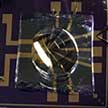 Current insulin detection methods are time-consuming with a low sensitivity, and are hence not adequate for rapid and direct detection of insulin at clinically appropriate concentrations. A novel graphene nanotechnology sensor is highly sensitive to changes in the charge distribution on and in the immediate vicinity of the graphene surface and can respond to physiological insulin concentration variations in a sensitive and rapid manner, thereby enabling real-time insulin monitoring.
Current insulin detection methods are time-consuming with a low sensitivity, and are hence not adequate for rapid and direct detection of insulin at clinically appropriate concentrations. A novel graphene nanotechnology sensor is highly sensitive to changes in the charge distribution on and in the immediate vicinity of the graphene surface and can respond to physiological insulin concentration variations in a sensitive and rapid manner, thereby enabling real-time insulin monitoring.
Aug 30th, 2017
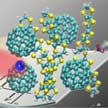 Due to their unique interlayer coupling and optoelectronic properties, van der Waals heterostructures are of considerable interest for the next generation nanoelectronics. Conventional 2D heterostructures usually are composed of two layers of opposite charge carrier type using inorganic materials. One of the challenges when creating 2D heterostructures is the painstaking stacking of the individual components on top of each other. Researchers have now found, for the first time, that there can also be charge transfer (CT) induced interfacial coupling between two different pairs of organic CT layers.
Due to their unique interlayer coupling and optoelectronic properties, van der Waals heterostructures are of considerable interest for the next generation nanoelectronics. Conventional 2D heterostructures usually are composed of two layers of opposite charge carrier type using inorganic materials. One of the challenges when creating 2D heterostructures is the painstaking stacking of the individual components on top of each other. Researchers have now found, for the first time, that there can also be charge transfer (CT) induced interfacial coupling between two different pairs of organic CT layers.
Aug 23rd, 2017
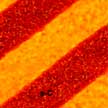 Although graphene properties and applications have already been well-discussed in the literature, it also is important to understand how 2D chemistry of graphene and graphene analogs is related to various applications. Graphene functionalization modifies the unique 2D features of graphene. In this way, the electronic and physical properties of graphene can be controlled toward the given purpose such as highly effective novel electronic device applications. Already, graphene functionalization such as adsorption, intercalation, and doping toward device applications has attracted great attention.
Although graphene properties and applications have already been well-discussed in the literature, it also is important to understand how 2D chemistry of graphene and graphene analogs is related to various applications. Graphene functionalization modifies the unique 2D features of graphene. In this way, the electronic and physical properties of graphene can be controlled toward the given purpose such as highly effective novel electronic device applications. Already, graphene functionalization such as adsorption, intercalation, and doping toward device applications has attracted great attention.
Aug 10th, 2017
 Researchers have developed a stretchable and transparent graphene-based electronic tattoo (GET) sensor that is only hundreds of nanometers thick but demonstrates high electrical and mechanical performance. They show that a GET can be fabricated through a simple wet-transfer/dry-patterning process directly on tattoo paper, allowing it to be transferred on human skin exactly like a temporary tattoo, except this sensor is transparent. Due to its ultra-thinness, a GET can fully conform to the microscopic morphology of human skin via just van der Waals interactions and can follow arbitrary skin deformation without mechanical failure or delamination for an extended period of time.
Researchers have developed a stretchable and transparent graphene-based electronic tattoo (GET) sensor that is only hundreds of nanometers thick but demonstrates high electrical and mechanical performance. They show that a GET can be fabricated through a simple wet-transfer/dry-patterning process directly on tattoo paper, allowing it to be transferred on human skin exactly like a temporary tattoo, except this sensor is transparent. Due to its ultra-thinness, a GET can fully conform to the microscopic morphology of human skin via just van der Waals interactions and can follow arbitrary skin deformation without mechanical failure or delamination for an extended period of time.
Jul 31st, 2017
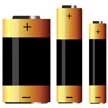 Graphene currently is the most studied material on the planet - this is especially true for charge storage and the results from many laboratories confirm its potential to change today's energy-storage landscape. Specifically, graphene could present several new features for energy-storage devices, such as smaller capacitors, completely flexible and even rollable energy-storage devices, transparent batteries, and high-capacity and fast-charging devices.
Graphene currently is the most studied material on the planet - this is especially true for charge storage and the results from many laboratories confirm its potential to change today's energy-storage landscape. Specifically, graphene could present several new features for energy-storage devices, such as smaller capacitors, completely flexible and even rollable energy-storage devices, transparent batteries, and high-capacity and fast-charging devices.
Jul 20th, 2017
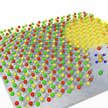 The ultimate challenge of nanotechnology is to control the structure of matter with atomic precision. The better we are at shaping and structuring material on a small scale, the more powerful technology we can dream of. Unfortunately, the atomic scale is entirely out of range for conventional patterning. Researchers now report that they have achieved nanoscale self-assembly within a two-dimensional layer. Dosing of ethylene and borazine near a hot iridium surface, leads for self-organising of a two-dimensional superlattice of graphene dots.
The ultimate challenge of nanotechnology is to control the structure of matter with atomic precision. The better we are at shaping and structuring material on a small scale, the more powerful technology we can dream of. Unfortunately, the atomic scale is entirely out of range for conventional patterning. Researchers now report that they have achieved nanoscale self-assembly within a two-dimensional layer. Dosing of ethylene and borazine near a hot iridium surface, leads for self-organising of a two-dimensional superlattice of graphene dots.
Jun 29th, 2017
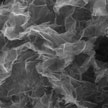 As two-dimensional (2D) materials gain more and more importance - thanks to their exotic electronic properties and abundant active sites - the development of high-yield, efficient, fast and low-cost synthesis methods to advance these materials from the laboratory to industry has become an urgent issue. Now, researchers have developed a general and rapid molten salts method that can synthesize various ion-intercalated 2D metal oxides and hydroxides, such as cation-intercalated manganese oxides, cation-intercalated tungsten oxides, and anion-intercalated metal hydroxides.
As two-dimensional (2D) materials gain more and more importance - thanks to their exotic electronic properties and abundant active sites - the development of high-yield, efficient, fast and low-cost synthesis methods to advance these materials from the laboratory to industry has become an urgent issue. Now, researchers have developed a general and rapid molten salts method that can synthesize various ion-intercalated 2D metal oxides and hydroxides, such as cation-intercalated manganese oxides, cation-intercalated tungsten oxides, and anion-intercalated metal hydroxides.
Jun 23rd, 2017
 Two-dimensional (2D) energy materials have outstanding physical and chemical properties in contrast to their bulk counterparts. This is particularly true for charge storage devices such as lithium-ion batteries and supercapacitors. Unfortunately, when directly applying these 2D nanostructured materials for energy storage, there is still a significant challenge as they may have serious self-restacking leading to decreased active surface areas and sluggish ion transport kinetics. Researchers have now developed an effective interlayer engineering strategy to improve sodium ion transport in 2D nanosheets via controlled organic intercalation.
Two-dimensional (2D) energy materials have outstanding physical and chemical properties in contrast to their bulk counterparts. This is particularly true for charge storage devices such as lithium-ion batteries and supercapacitors. Unfortunately, when directly applying these 2D nanostructured materials for energy storage, there is still a significant challenge as they may have serious self-restacking leading to decreased active surface areas and sluggish ion transport kinetics. Researchers have now developed an effective interlayer engineering strategy to improve sodium ion transport in 2D nanosheets via controlled organic intercalation.
 Subscribe to our Nanotechnology Spotlight feed
Subscribe to our Nanotechnology Spotlight feed





